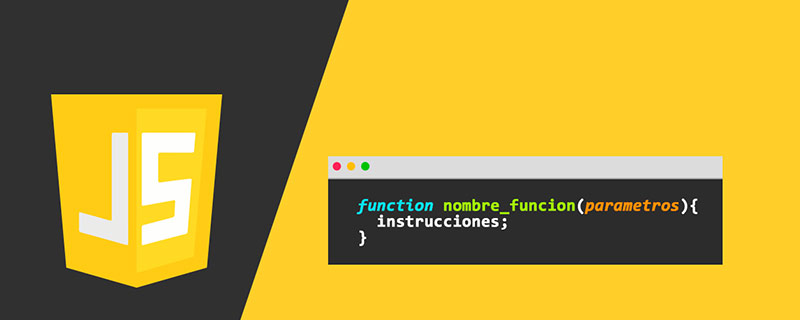
Speaking of Node.js, you have probably heard a bunch of dizzying terms
About asynchronous, mainlyEvent loop and **Non-blocking I/O, **officially because of these two points, Node.js can be called high performance.
So it is very important to understand the asynchronous mechanism and usage of Node.js
What is the non-blocking I/O of Node.js
- I/O is Input/Output, the input and output of a system
- The difference between blocking I/O and non-blocking I/O lies in the time it takes for the system to receive input and then output. Can it Receiving other input
Example of queuing for rice

The difference between blocking I/O and non-blocking I/O It depends on the time it takes for the system to receive input and then output, and whether it can receive other inputs
- For customers/ordering staff
- Queuing up to order food is blocking I/O (customers at the back must wait for the customer in front to receive it before they can receive it)
- Ordering food in the restaurant is non-blocking I/O (because there are many waiters in the restaurant, others order While serving, you can also order by yourself)
##Compare the canteen aunt and waiter to the software system -
The canteen aunt can only serve one portion Cooking on the floor -> Blocking I/O
- The waiter can serve other guests after ordering -> Non-blocking I/O
Input = order food - Output = serve food
- [Recommended learning: "
For example: A developer raised a question on the forum: "How to solve this Node.js problem? Waiting online, urgent" .
The situation of blocking I/O is-> He keeps waiting for other people to answer, and when other people answer, he does other things.
The situation with non-blocking I/O is-> He goes to do other things, and then comes back to see the answer after a while
Example of doing houseworkXiaofang needs to do the following things to do housework:
Wash clothes in the washing machine (20 minutes))- Sweep the floor (10 minutes)
- Tidy up Desk (10 minutes)
- Hanging clothes (10 minutes)
- Please design a clever and reasonable sequence so that Xiaofang can complete these things in the least amount of time
A: 20 minutes
- B: 25 minutes
- C: 30 minutes--because when the washing machine is washing clothes, Xiaofang can do other things✅
- D : 35 minutes
Notes:
Confirm- system, enter, Output
- , what are they? During the I/O process, can other I/O be performed?
const glob = require("glob");
var result = null;
console.time("glob");
// 获取目下的文件和文件名
result = glob.sync(__dirname + "/**/*");
console.timeEnd("glob");
console.log(result);Print the following results
 You can see that it takes
You can see that it takes
to get the result It can be concluded from the above code that
Understanding non-blocking I/O from the code
const glob = require("glob");
var result = null;
console.time("glob");
// 获取目下的文件和文件名
glob(__dirname + "/**/*", function (err, res) {
result = res;
console.log("got result");
});
console.timeEnd("glob");
console.log(1 + 1);Print the following results
glob: 3.198ms 2 got result
It can be concluded from the above code that
non-blocking I/O reduces the waiting time , you can also perform other things during the execution processFor more programming-related knowledge, please visit:
Introduction to ProgrammingThe above is the detailed content of A closer look at non-blocking I/O in Node.js. For more information, please follow other related articles on the PHP Chinese website!
 Vercel是什么?怎么部署Node服务?May 07, 2022 pm 09:34 PM
Vercel是什么?怎么部署Node服务?May 07, 2022 pm 09:34 PMVercel是什么?本篇文章带大家了解一下Vercel,并介绍一下在Vercel中部署 Node 服务的方法,希望对大家有所帮助!
 node.js gm是什么Jul 12, 2022 pm 06:28 PM
node.js gm是什么Jul 12, 2022 pm 06:28 PMgm是基于node.js的图片处理插件,它封装了图片处理工具GraphicsMagick(GM)和ImageMagick(IM),可使用spawn的方式调用。gm插件不是node默认安装的,需执行“npm install gm -S”进行安装才可使用。
 一文解析package.json和package-lock.jsonSep 01, 2022 pm 08:02 PM
一文解析package.json和package-lock.jsonSep 01, 2022 pm 08:02 PM本篇文章带大家详解package.json和package-lock.json文件,希望对大家有所帮助!
 怎么使用pkg将Node.js项目打包为可执行文件?Jul 26, 2022 pm 07:33 PM
怎么使用pkg将Node.js项目打包为可执行文件?Jul 26, 2022 pm 07:33 PM如何用pkg打包nodejs可执行文件?下面本篇文章给大家介绍一下使用pkg将Node.js项目打包为可执行文件的方法,希望对大家有所帮助!
 分享一个Nodejs web框架:FastifyAug 04, 2022 pm 09:23 PM
分享一个Nodejs web框架:FastifyAug 04, 2022 pm 09:23 PM本篇文章给大家分享一个Nodejs web框架:Fastify,简单介绍一下Fastify支持的特性、Fastify支持的插件以及Fastify的使用方法,希望对大家有所帮助!
 node爬取数据实例:聊聊怎么抓取小说章节May 02, 2022 am 10:00 AM
node爬取数据实例:聊聊怎么抓取小说章节May 02, 2022 am 10:00 AMnode怎么爬取数据?下面本篇文章给大家分享一个node爬虫实例,聊聊利用node抓取小说章节的方法,希望对大家有所帮助!
 手把手带你使用Node.js和adb开发一个手机备份小工具Apr 14, 2022 pm 09:06 PM
手把手带你使用Node.js和adb开发一个手机备份小工具Apr 14, 2022 pm 09:06 PM本篇文章给大家分享一个Node实战,介绍一下使用Node.js和adb怎么开发一个手机备份小工具,希望对大家有所帮助!
 图文详解node.js如何构建web服务器Aug 08, 2022 am 10:27 AM
图文详解node.js如何构建web服务器Aug 08, 2022 am 10:27 AM先介绍node.js的安装,再介绍使用node.js构建一个简单的web服务器,最后通过一个简单的示例,演示网页与服务器之间的数据交互的实现。


Hot AI Tools

Undresser.AI Undress
AI-powered app for creating realistic nude photos

AI Clothes Remover
Online AI tool for removing clothes from photos.

Undress AI Tool
Undress images for free

Clothoff.io
AI clothes remover

AI Hentai Generator
Generate AI Hentai for free.

Hot Article

Hot Tools

SublimeText3 English version
Recommended: Win version, supports code prompts!

mPDF
mPDF is a PHP library that can generate PDF files from UTF-8 encoded HTML. The original author, Ian Back, wrote mPDF to output PDF files "on the fly" from his website and handle different languages. It is slower than original scripts like HTML2FPDF and produces larger files when using Unicode fonts, but supports CSS styles etc. and has a lot of enhancements. Supports almost all languages, including RTL (Arabic and Hebrew) and CJK (Chinese, Japanese and Korean). Supports nested block-level elements (such as P, DIV),

Zend Studio 13.0.1
Powerful PHP integrated development environment

Atom editor mac version download
The most popular open source editor

MinGW - Minimalist GNU for Windows
This project is in the process of being migrated to osdn.net/projects/mingw, you can continue to follow us there. MinGW: A native Windows port of the GNU Compiler Collection (GCC), freely distributable import libraries and header files for building native Windows applications; includes extensions to the MSVC runtime to support C99 functionality. All MinGW software can run on 64-bit Windows platforms.







